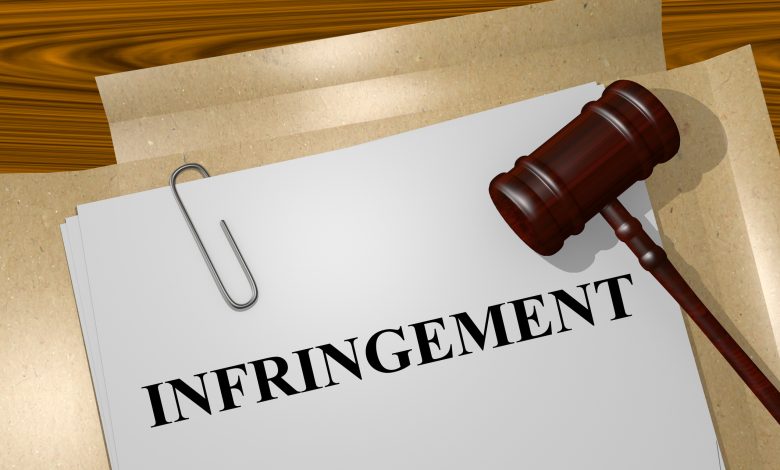What is copyright infringement?

In this article, we are going to explain to you what copyright infringement is, since you have probably heard us talk about how important it is for your book to look good both inside and out. This involves choosing the right format, writing a good synopsis, selecting the appropriate font, and of course, designing a good cover. Self -promotion of your book is so relevant that you cannot afford not to have a radiant cover.
If you are reading this article, you probably have a vague idea of what copyright is. Throughout this post we are going to highlight the most important things to keep in mind when using third-party images for your cover. Specifically, when you should worry about copyright. Once you finish this reading, you will know everything about how to avoid image copyright infringement.
Of course, this article assumes that you are neither a photographer nor a graphic designer. If you are, congratulations, your job as an author is now much easier! In fact, you can probably skip this article. If, on the other hand, you are thinking about obtaining visual material for your cover on the internet, keep reading.
What you should know about copyright infringement in Spain
If you really want to go into detail about the subject, in Spain, the official BOE article on copyright could help you. As we know that this reading can be quite extensive, we have summarized some of the most important points.
Creative Commons Licenses
Basically, all images that you can find on Internet search engines are included in copyright. However, this is where the professional and affordable book writing services in USA, which are a variety of copyrights that can modify their terms and conditions depending on the license chosen. We can find 7 different types of Creative Commons:
- Public domain (CC-0): here the author has expressly waived his copyright, so the legal status is equated to that of the public domain.
- Attribution (CC BY): in this case you can use the image, adapt and modify it without any impediment, even with commercial use. The only requirement is that you must cite the original author (usually a link to the original work)
- Attribution – Share Alike (CC BY-SA): This stipulates that any modification of the original work (such as a montage) must be published under the same license as the original work. Citing or naming the author is also mandatory.
- Attribution – Non-Commercial (CC BY NC): the use of the image is available here as long as it does not have a lucrative purpose.
- Attribution – No Derivative Works (CC BY -ND): in this case no modification of the image is allowed, but both commercial and non-commercial distribution is permitted. Always citing the original author.
- Attribution – Non-Commercial – Share Alike (CC BY-NC-SA): commercial use of the original image or its possible modifications is not permitted here either, but modifications are allowed as long as they are distributed in the original conditions and are named to the author.
- Attribution -Non Commercial – No Derivative Work (CC BY NC-ND): this is the most limiting license of all, the image cannot be modified or used for profit. That is, it can only be downloaded and shared with third parties. Of course, a citation to the author is also mandatory.
What is the validity of copyright in Spain?
In general terms, the creator of an original work has both the economic and moral rights over it. In Spain, according to the Intellectual Property Law and as in most countries of the European Union, an author will have the right to the economic exploitation of his work throughout his life and 70 years after his death. The property right then passes to the heirs.
Moral rights, however, do not expire, are inalienable and are transmitted to heirs after the death of the creator. This is a guarantee of respect and integrity of the work (right not to have any type of modifications made to it).
Some aspects to take into account
In addition to everything mentioned above,
Primarily, the little symbol we all associate with copyright © actually has no legal weight. This means that the absence of the symbol does not mean that copyright law does not apply. Elusive, right?
Next, if you cannot find the copyright holder even after an exhaustive search, it is possible that the image could be classified as an “orphan work.” This means that the copyright has not been claimed and therefore you can do so freely, even for commercial purposes. In order for a work to be classified as orphan, you must send a request to the Intellectual Property Offices. However, to do this, there are some requirements that you must meet, such as conducting a diligent, reasonable and good faith search. You can read more information about orphan works in Spain before deciding whether it is worth the effort or not.
You’re probably thinking right now that all of this is a lot of work just to get a cover for your book. Don’t worry! hopefully now we are going to share a series of ways you can find copyright free images. Sounds good huh?
Find royalty-free images for your book cover
Here are some of our favorite royalty-free image platforms:
Unlash
Unlash is a platform worth its weight in gold. It has a wide variety of high-quality images that you can freely download and reuse. If we quote your license page:
All photos posted on Unlash can be used for free. They may be used for both commercial and non-commercial purposes. It is not necessary to ask permission or credit the author (cite him), although doing so is appreciated when possible.
More precisely, unlash grants you an irrevocable, non-exhaustive, worldwide copyright license to download, copy, modify, distribute, perform and use Unlash photos free of charge, including for commercial purposes, without the permission or attribution of the photographer or Unlash.
Great, right? If you are looking for an image for the cover of your book, we doubt that there is anywhere else where you will find a better one than on Unlash.
Pixels
Pixels is a good alternative to Unlash, and is based on exactly the same premise. You can download, edit and reuse the images as you see fit. No copyrights to worry about. In our experience, images on Pixels tend to be a little more edited than those on Unlash. Be sure to check out Pixels’ great selection of abstract images if you’re looking for a more alternative cover.
New Old Stock
Remember how we said that copyright expires after 70 years? Well, this platform is full of old images – or vintage – that no longer have copyright. Perfect for biographies, history books, or period fiction.
Canvas
If you don’t want a photo for your cover, and none of the images on Pixels or Unlash convince you, you can always try creating your own design from scratch. Canvas is an excellent online graphic design tool, and you only need to open an account to start using it.
Here you will find a wide variety of shapes, patterns and presets that allow you to unleash your imagination, although you will also have the option to create a minimalist design. In fact, we’ve written a specific article for those interested in designing their cover with Canvas that might help you if you’re looking for inspiration.
Cover Designer
We apologize in advance for the blatant self-promotion. However, we leave this option here in case it might interest you. In case you didn’t know, at MI bestseller we have our own Cover Designer. It’s free and you don’t need to be a design master to use it.
It is a quite attractive option if you don’t want to rack your brains with this topic. Offers a wide range of royalty-free images that you can use. Additionally, these will be directly resized to fit the dimensions of your cover. In other words, you have everything you need in one place. In case none of our images convince you, you will have the option of using your own.
Google Image Search
The Google search engine may seem like a strange idea in this context. Especially considering that most images on the internet are copyrighted. However, Google is aware of this fact and that is why it offers you a practical way to avoid it.
The process is as follows: simply find the image you want to use for your cover. In the example below we have decided that the cover of your book will be a photo of a beagle.
Once you have found what you are looking for, click on »Tools» and then on »Use Rights»: you should see a bar like the one in the image above. Here you can see how you have a whole series of options related to the Creative Common licenses that we talked about at the beginning of the article. Probably the smartest option is the one marked, “labeled for reuse with modification.” Under this license, you can use and edit the image as you wish.
Other interesting options
It is possible that you will not find the image you are looking for in any of the options we have given you. Don’t give up, there are more options out there. If you liked Unlash and Pixels, you’ll probably also like Pickaway, Stock snap, and Pikwizard.
Is this all you need to know to avoid copyright infringement?
If your purpose is nothing more than to find a memoir ghostwriting services for the cover of your book, the answer is yes. The issues discussed throughout the article should be sufficient. Remember:
- If you find an image on the Internet that you would like to use, always check who is the copyright holder. Normally it is usually the same person who made that image.
- Once you know who the copyright owner is, ask for permission to use their image.
- If you get this authorization, make sure you follow all the rules they have given you.
- Keep in mind that the author may ask you for money for the use of their image.
- If you can’t find any authors, you could try applying for an ‘orphan works’ license. It’s probably easier for you to look for another image.
- All numbered pages and tools in the second part of the article offer copyright-free images. It is therefore the easiest way to avoid any infringement.



